Normally, I would write one of these for a Premier League slate, so I thought why not do it for the Round of 16?
This will not be as detailed as my Premier League ones because it’s the summer and I don’t have the usual amount of data or catalogue of matches on every team. FotMob is about the only site that has aggregated data from the tournament, so that is mainly what I am going to use.
However, there are some things I have noticed throughout the tournament, so let’s take a stab at previewing the knockout stage.
Palmeiras vs. Botafogo
Palmeiras in Possession vs. Botafogo out of Possession
It’s been the Estêvão show so far for Palmeiras. Basically what they are doing in possession is trying to get the ball to him out wide and let him create chances. There are countless times where they’ve piled a ton of players into the box and let him or the opposite winger try to deliver a cross.
Palmeiras is averaging 8.3 successful crosses per 90 minutes, which is the second highest mark in the tournament.
The more times they can get Estêvão in space like the situation against Al Ahly, the better because he’s an insane dribbler and is so good at cutting inside to get on his favorite left foot.
One concept that I think you will see them use is what PSG did to Botafogo. See the Brazilian side knew they could not get overloaded through the middle. So, they defended in a extremely narrow 4-3-3.
What PSG tried to do from there was push most of Botagofo’s defense to one side of the pitch and then play a switch ball to the opposite winger.
These are the types of situations Palmieras needs to create to get Estêvão in space.
When these two played in the very first match of the Brazilian Serie A season back in March Palmeiras really struggled to create chances. The match ended 0-0 and even though Palmeiras created 1.3 expected goals, Estêvão was held in check having only one successful dribble out of five and less than 0.10 xG created. They did however complete six crosses into the penalty area, which will probably be their best method of creating chances.
Botafogo in Possession vs. Palmeiras out of Possession
One thing I have noticed watching Palmeiras is they aren’t that great of an out of possession team. There are so many situations I can point to where guys in the back line either get pulled out of position and balls are played into the space or they don’t step and allow the opponent to easily receive the ball.
Luis Suarez’s second goal is a perfect example of the downside of not stepping out on forwards dropping into space.
Because he’s afforded so much space, he was able to turn, dribble through the Palmeiras defense and score.
Dropping inbetween the lines is a staple of Botafogo. As you can see here against Seattle, they were trying hard to find space inbetween the lines of their 4-4-2.
What often happens with Palmeiras also is the fullbacks will jump and go man to man against the opposing winger, but too often they are getting beat in behind.
Here is an example against Inter Miami which came off a throw in:
In the previous meeting with Palmeiras, Botafogo ended up only creating 0.9 expected goals with 26 touches in the penalty area. Despite winning two matches, Botafogo has created under one expected goal in all three of their matches, so I wouldn’t expect them to completely open up Palmeiras.
Benfica vs. Chelsea
Benfica in Possession vs. Chelsea out of Possession
Benfica pulled off a stunner on the final day of the group stage beating Bayern Munich 1-0 to win Group C. They were pretty fortunate to do it in the end as Bayern racked up over two expected goals.
image via FotMob
The way Benfica created most of their chances in that match was in transition and allowing their fullbacks to bomb forward to make overlapping runs. Even with only 27% of the ball Benfica were able to complete three crosses into the penalty area with one leading to the only goal of the match.
That can be effective here against Chelsea because Flamengo was able to attack them down the flanks and then find the opposite fullback in space or at the back post one too many times like this.
When Benfica played teams like Barcelona, Bayern Munich, and Monaco in the Champions League, they did not try to build out of the back with regularity and took a much more conservative approach and were happy to concede possession.
However, Benfica’s build up can be effective because Chelsea can be opened up and their press isn’t that good. They don’t have enough players fully committed to the press to make it have it be effective. That’s probably why they finished ninth in high tunrovers and eighth in PPDA this year in the Premier League.
It’s situations like this where Flamengo is able to easily pass it to the fullback who has time to make a direct pass to the forwards is why Chelsea struggle to be an elite pressing team.
Chelsea in Possession vs. Benfica out of Possession
The signing of Liam Delap was exactly what Chelsea needed. They have struggled to break down low blocks for the better part of two years and now they finally have an aerial threat in the box as well as a striker that can hold up play, while also being able to make runs in behind.
While he is the missing piece that Chelsea needs it’s still going to be a challenge to break down Benfica’s 4-4-2 low block. Bayern did rack up a bunch of chances, but they are one of the elite teams in the world at playing through the middle due to their 2-4-4 build up which allows them at times to create a six or seven man central overload. Chelsea is not anywhere near the level of Bayern.
Maresca has them build up in a 3-2-5 to create a five man central overload with Palmer and Fernandez operating in between the lines. When teams like Benfica play super compact like this, it can be very difficult to find that space centrally.
What often happens then is the ball gets funneled to the wingers who try to beat the fullback 1 v 1, but it often ends with a bad shot or a cross into the box. Now that Delap is in the team those crosses can find an aerial threat because every single one of Chelsea’s attackers last season had an aerial duel win rate below 50%.
PSG vs. Inter Miami
PSG in Possession vs. Inter Miami out of Possession
I struggle to see how PSG doesn’t put four or five goals in the back of the net.
Inter Miami is a terrible out of possession team. Through their three group stage matches they conceded 5.1 expected goals and they were in probably the easiest group in the tournament (Thank you FIFA). In the MLS this season they are allowing 1.51 xG per 90 minutes. This is Major League Soccer we are talking about and now they are supposed to effectively defend the European Champions who averaged 2.6 xG per 90 minutes in the Ligue 1? Not. A. Chance.
Here is the problem. Javier Mascherano wants Inter Miami to play a high line and press their opponents high up the pitch, but their players are old and don’t want to press anymore, which allows teams to play right through them. In addition to that, Messi doesn’t defend, at all, that’s not something new and against most teams it doesn’t matter, but PSG are too good with their position rotations finding the space that he vacates to rip opponents apart.
The image below is alarming because look at all of the space they are allowing everywhere. What ends up happening is Palmeiras are easily able to carry the ball into space, crate an overload here on the left side, and eventually score.
With PSG able to rotate positions freely with everyone on the pitch they will be able to create overloads everywhere.
PSG has also shown some variability to their build up. Like I showed above for the Palmeiras vs. Botafogo match, they are playing more switch balls out wide or simply trying to play more of those long passes to target their forwards. PSG is averaging 44.7 accurate long balls per 90 minutes, which is 14 more than the next closest team in this tournament. Oh, and they are also averaging almost 75% possession too.
Inter Miami stands zero chance in this match unless Messi scores six goals.
Inter Miami in Possession vs. PSG out of Possession
Even though he’s old, Messi has still got it. Not surprisingly, he is everything to Inter Miami’s attack, even though he’s only scored one goal at the Club World Cup. He is the one dropping deep to help aid in the build up and connect the play from defense to attack.
It’s a very similar role to the one he plays with Argentina and it’s crucial for Inter Miami.
Even though they scored four goals against Porto and Palmeiras they only created 2.1 expected goals in those matches. Messi is the greatest, but even he can only do so much because there really isn’t much else to their attack. I mean through their three matches they only have 45 touches in the opponents penalty area. For comparison, PSG has 118.
PSG are going to press relentlessly and I am sure Luis Enrique will make sure Messi isn’t given freedom to drop and easily receive the ball.
Like I said above, it really comes down to if Messi can score or create a ton of scoring opportunities. PSG has only conceded 1 goals and 1.8 expected goals through three matches, so this mountain looks a little too high to climb for Inter Miami.
Flamengo vs. Bayern Munich
Flamengo in Possession vs. Bayern Munich out of Possession
At the heart of Felipe Luis’ tactics Flamengo uses relationism concepts to progress the ball up the pitch. That is a staple of South American football getting as many players close to the ball as possible to play through the opponent using a lot of short passes.
They lead the Brazilian Serie A in possession and total number of passes this season, but doing that against a team the level of Bayern Munich is not easy task. Vincent Kompany’s side is one of the best counter pressing sides in the world because of their rest defense, which surrounds the opponents and easily allows them to win the ball quickly.
Of course we have to remember this match is going to be played in Miami at 4pm local time where it’s going to be 87 degrees with almost 70% humidity (rain is in the forecast). So, pressing with a lot of intensity is going to be difficult.
Against Chelsea, Flamengo only attempted 32 long balls of their over 400 passes for the match, which shows how much Felipe Luis believes in his system.
It’s very fluid and allows for positional rotations that can make it difficult on the opponent. He wants to try and overload the middle as the fullbacks and wingers don’t provide much width.
They ended up holding 52% of the ball against Chelsea, but that isn’t going to happen against Bayern, so it will be interesting to see a) how effective Flamengo are in build up and 2) if they can effectively hit Bayern on the counter.
Bayern Munich in Possession vs. Flamengo out of Possession
Felipe Luis’ defense is build on a solid foundation of sitting in a very compact low block. It’s usually a 4-4-2 shape like the one below, which is what Bayern just faced against Benfica.
Bayern didn’t score but ended up creating well over two expected goals. The reason they are so effective against low blocks is because how aggressive Vincent Kompany is with his build up shape.
Bayern has been using a 2-4-4, but sometime when they face 4-4-2’s they switch to a 3-2-5 to maintain a numerical advantage against the front two. What the 2-4-4 does is allows Bayern Munich to essentially get six to eight players centrally to overload the opponent.
The utilization of their fullbacks inverting into the half spaces creates 1 v 1 situations for their wingers like this.
The goal is to completely suffocate and overwhelm the opponent until the break through happens. Bayern is holding well over 70% possession in this tournament and even if you remove their 10-0 win against Auckland City they still created over five expected goals against Boca Juniors and Benfica.
Flamengo’s press against Chelsea was pretty bad too. Look at the example below on how easily it was for Chelsea to build up right through the middle. Bayern will pick this apart if Flamengo try to press.
Inter vs. Fluminense
Inter in Possession vs. Fluminense out of Possession
It may have been a little bit of a struggle, but Inter eventually won their group and it was actually in pretty dominating fashion. In their three matches they created 7.2 expected goals and the concepts that they are using in possession are very similar to what they were doing under Inzaghi.
You have to remember that Cristian Chivu was managing in Inter’s youth system before he got the Parma job in February. Inter is building up in a 3-3-4 or 3-1-6 shape right now, with the fullbacks pushing high and wide, while Barella will typically drop into the back line top receive the ball.
From this type of position below, Inter can drop any of the four central players to create space in behind.
Here is an example of Lauturo Martinez dropping into receive a pass, drawing the centerback with him to create space centrally.
Once Inter reaches the final third they will often overload the last line of defense with five or six guys and send in a lot of crosses to the box using their aerial prowess to their advantage.
Fluminense was very good defensively against Dortmund in their opening match of the group stage holding them to only 0.24 xG and then held Mamelodi Sundowns scoreless and to 0.60 xG.
They have defended out of a 4-3-3 midblock and have the ninth most high regains in the tournament. However, against Dortmund they only had three high turnovers, so most of those came against Ulsan and Mamelodi Sundowns.
Fluminense in Possession vs. Inter out of Possession
Similar to Flamengo, Fluminense is a relationism team liking to use a lot players in close proximity to play through the opponent.
Fluminense leads the Brazilian Serie A in the number of short passes completed and so far in this tournament are 16th in the number of accurate long balls completed.
The problem is, while it’s great to be able to play through an opponent, you have to be able to create chances in the final third, which Fluminense is not doing. Against Dortmund and Mamelodi Sundowns they only created a total of 0.9 expected goals. Even against Ulsan, they scored four goals, but only created 1.14 expected goals from open play.
They let Mamelodi Sundowns control 68% of the ball in their final group stage matches and were not effective at hitting them on the counter. So, how are they supposed to that to Inter?
They also have been pretty reliant on set pieces, but Inter is one of the best set piece defenses in Europe.
Even in the Brazilian Serie A, Fluminense is only averaging 1.15 xG per 90 minutes. I don’t see them threatening one of the best out of possession teams in the world.
Manchester City vs. Al Hilal
Manchester City in Possession vs. Al Hilal out of Possession
Manchester City brought in so much young talent during the transfer window and Pep Guardiola has given those new players a good run out in the group stage so far.
With all of the talent they have the one thing they have shown during the group stage is their aggression in possession. Through the later parts of the season, Manchester City were a bit cautious because one they lost Rodri they were getting opened up in transition time and time again.
Well, Rodri is back now, which mean Manchester City has the ability to be more aggressive in possession.
You saw that against Juventus with situations like this where they have nine players in and around the box.
All it took is a pass centrally to Ait-Nouri who quickly played it to Doku who was 1 v 1 against Kalulu and beat him inside for the opening goal.
There are now so many variations that Manchester City has when breaking down low blocks without much of a worry of getting opened up in transition.
That is the reason why Manchester City scored more goals than anyone else during the group stage.
Simon Inzaghi’s Al Hilal gave Real Madrid some problems in the opening match of the group stage and defended pretty well in their low block for a majority of the second half. Even though Real Madrid created 1.85 non-penalty expected goals, their best chance and lone goal came in transition, which had an xG rating of 0.70.
That means outside of that one transition break, they sat in and held Real Madrid to less than one expected goal from open play.
However, defending Manchester City may be impossible with the number of options Pep has at his disposal now. Inzaghi is one of the best defensive coaches in world football, but this even may be too big of a task.
Al Hilal in Possession vs. Manchester City out of Possession
Rodri being in the squad makes a massive difference, but he doesn’t solve everything. The system Pep has installed is now reliant on Manchester City counter pressing at an elite level, otherwise there will continue to be problems for them defending in transition.
Like I showed in the image above, that is an incredibly aggressive rest defense. One pass out and you can very easily get numbers in transition, but that is a risk Pep is willing to take because Manchester City is going to outscore just about anyone in the world, which kind of a similar philosophy to Hansi Flick’s Barcelona.
Inzaghi has already developed a really nice 3-4-3 build up with wide passing diamonds and then has the ability to easily transition to a 4-3-3 and create a box midfield. While that all sounds great and will probably be dominant in the Saudi Pro League, they are going to have to be on point with it here or else they are going to give Manchester City far too many easy transition opportunities.
They did show against Real Madrid they have the ability to play direct if needed. They would do subtle things like create a 2 v 1 against the fullback when going long from the keeper, which early on created a dangerous opportunity.
These types of things and finding ways out of Manchester City’s counter press is what they will have to do to stand a chance in this match.
Real Madrid vs. Juventus
Real Madrid in Possession vs. Juventus out of Possession
Xabi Alonso is slowly trying implement the style of play that made Leverkusen so successful, but it’s going to take some time.
His style is a mixture of positional play and relationsim taking concepts from both while gives his side variability in build up, but also allows them to consistently overload them through every phase.
One of the concepts Xabi Alonso loves is “Overload to Isolate”. It’s the main reason why his fullbacks Grimaldo and Frimpong combined for an insane 26 goals over the past two seasons.
What Alonso will do is overload one side of the pitch, force the opponent to shift over, and then play a switch ball to the opposite side of the pitch where they often have a 2 v 1 or 1 v 1.
The addition of Trent Alexander-Arnold is massive because now they can use his passing range to target Vinicius Jr.
Against low blocks Xabi Alonso wants his side to play through the middle and we are already seeing extreme overloads like this, trying to get as many players close to the ball to play quick passes through the defensive block.
Juventus under Igor Tudor has been pressing high in a man to man fashion with more regularity. They nicked a goal off Manchester City directly from a high turnover, but what you will mainly see against better competition is them fall back into a 5-3-2 low block.
However, Salzburg forced 37 danger zone losses (seven led to a shot) and 10 high turnovers against Real Madrid on Thursday, which is a tad concerning for Alonso.
image via markstatsbot on X
They only conceded 7.6 expected goals in his final nine matches in charge of the Serie A season, but given the struggles they had against Manchester City, I have a hard time seeing them slowing down Real Madrid.
Juventus in Possession vs. Real Madrid out of Possession
The Real Madrid press has to improve or Juventus is going to continually play through them.
Of course I say that, but I am not the one running endlessly at 3pm local time in the heat and extreme humidity of Miami on July 1st.
Al Hilal was able to have a lot of success building up in the first half against Real Madrid by simply rotating the ball from one side to the other to create space to play down the flanks like this:
Juventus have a couple of different build up formations, but it’s mainly a 4-2 base and they will often use Michele Di Gregorio as a +1, which makes it very difficult to press them effectively. Manchester City did force 11 high turnovers, but Real Madrid is nowhere near that level right now.
Under Tudor, Juventus has been more willing to play direct to their forwards and mainly get the ball moving as quickly forward as possible. That is a big difference from when they were under Thiago Motta where it was a lot of slow build up with the main aim overloading the opponent.
That slow build up didn’t work against good teams because in their 15 matches under him against the top half of Serie A, they only created a total of 15.8 expected goals.
Under Tudor though there hasn’t been an offensive explosion. In their remaining nine Serie A matches Juventus only created 12.4 expected goals.
Dortmund vs. Monterrey
Dortmund in Possession vs. Monterrey out of Possession
Dortmund finished the domestic season in amazing fashion under Nico Kovac, but they were a little sluggish to begin the Club World Cup.
I’ll talk about their pressing below, but they have used that press to create a lot of high turnovers, which turn into easy transition opportunities and big chances.
From build up Kovac has varied between a 3-1-6 and 3-2-5 and one of their favorite moves in possession is to get someone close to Guirassy have one or the other drop to recieve the ball and then play a 1-2 in behind from the space created from the initial player dropping deep.
This match though will come down to how effective Dortmund is at breaking down Monterrey’s 4-4-2 low block. They have been pretty effective with their crossing so far this tournament either moving Julian Brandt into a wider position with their fullbacks pushing forward to make both overlapping and under lapping runs.
Monterrey is pretty fortunate to be here after conceding one goal off of almost four expected goals to Inter and River Plate.
Dortmund should be able to create plenty of chances in this match and will be overloading Monterrey’s last line of defense with five or six guys.
Monterrey in Possession vs. Dortmund out of Possession
Monterrey may have scored four goals against Urawa Red Diamonds, but they did absolutely nothing against Inter and River Plate.
Against Inter, their only dangerous chances came off of set pieces.
image via FotMob
Against River Plate, they only took three shots and created 0.13 xG for the entire match.
What that highlights is they aren’t a very good offense when they have to play direct. They tried to build out of the back against Inter, but did not have much success. As you can see from their pass map, they really struggled to get the ball out of their own end of the pitch.
image via markstatsbot on X
I mention that because Dortmund is second to only Manchester City in terms of possession won in the opponents final third.
image via FotMob
Kovac has Dortmund playing more of a midblock, but outside of the opening match against Fluminense they have done excellent job disrupting the opponents build up and creating high turnovers.
Of course Dortmund’s defense hasn’t been perfect. They were terrible against Mamaelodi Sundowns conceding three goals, 16 shots, and 2.74 expected goals.
I mean it’s a little concerning when the opponents is able to receive the ball here:
Then dribble past your entire defense to get a 3 v 0 break on goal.


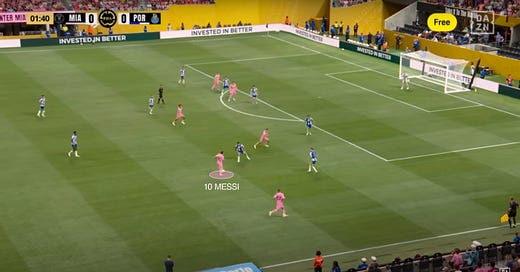


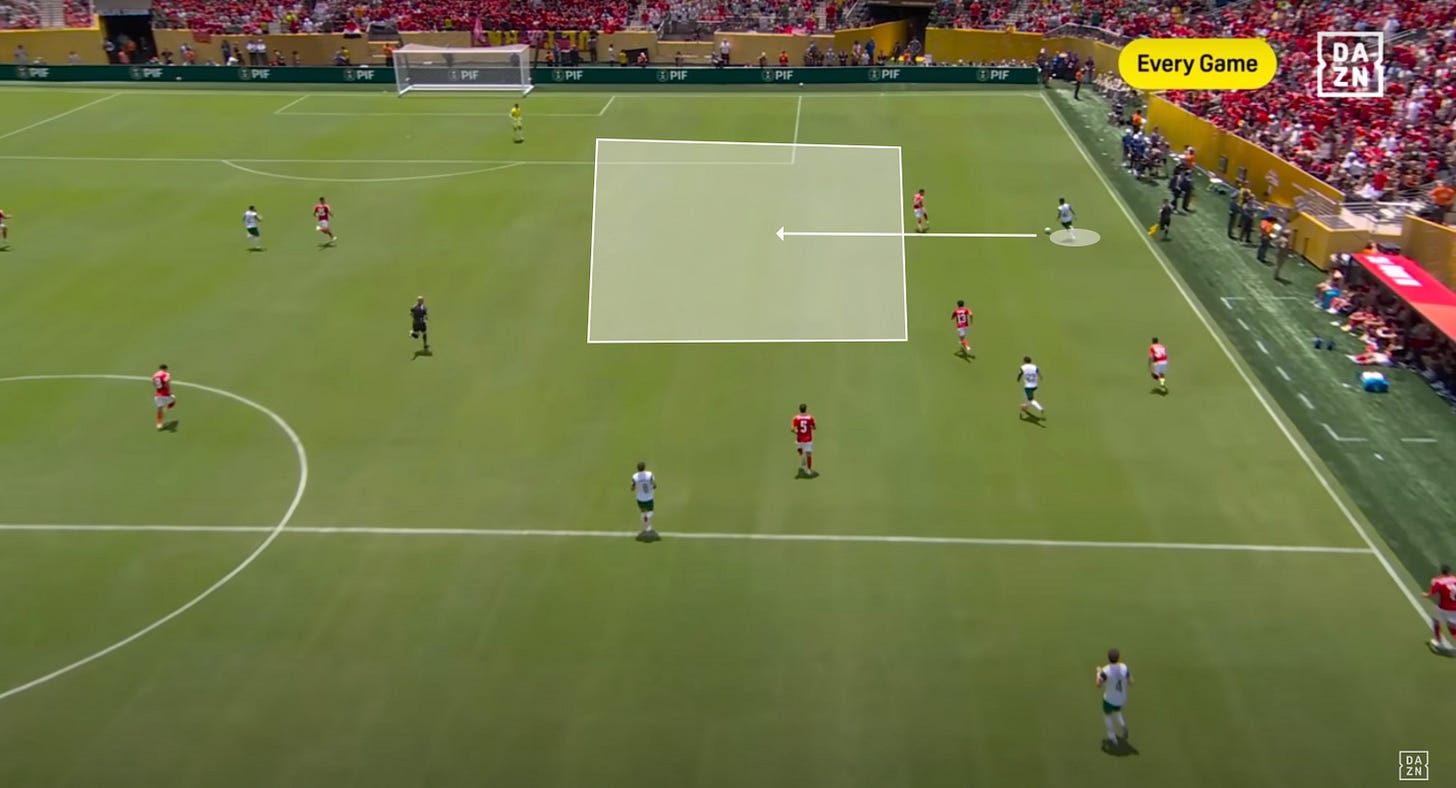
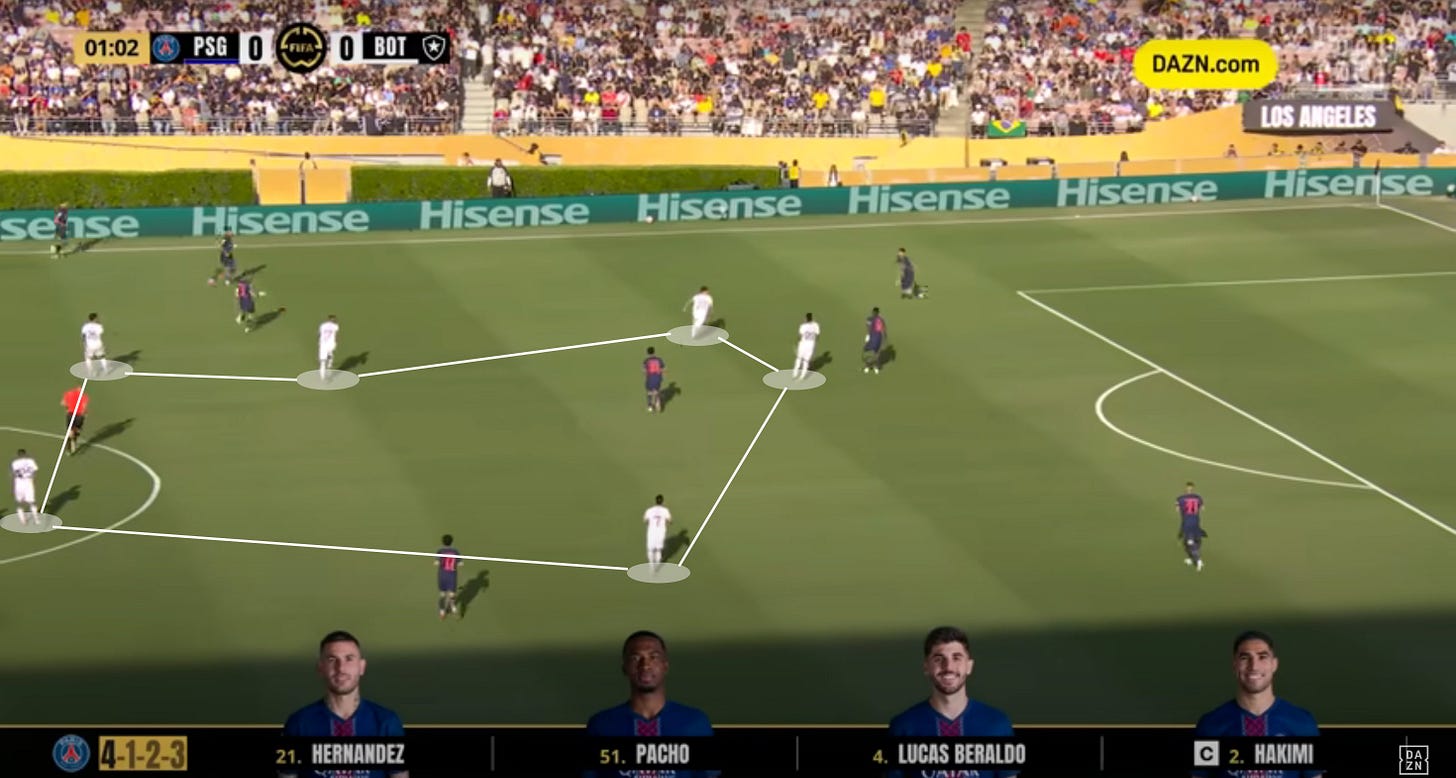








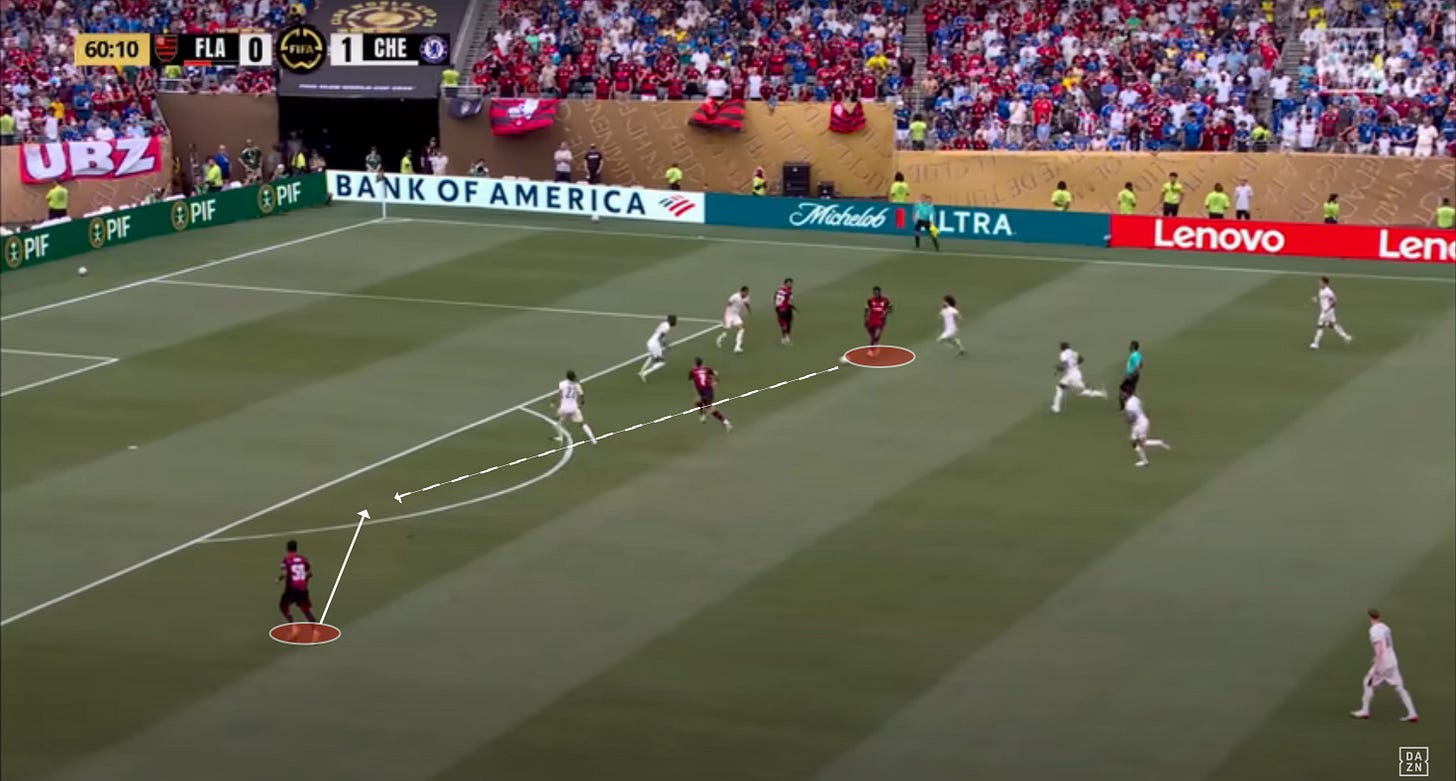





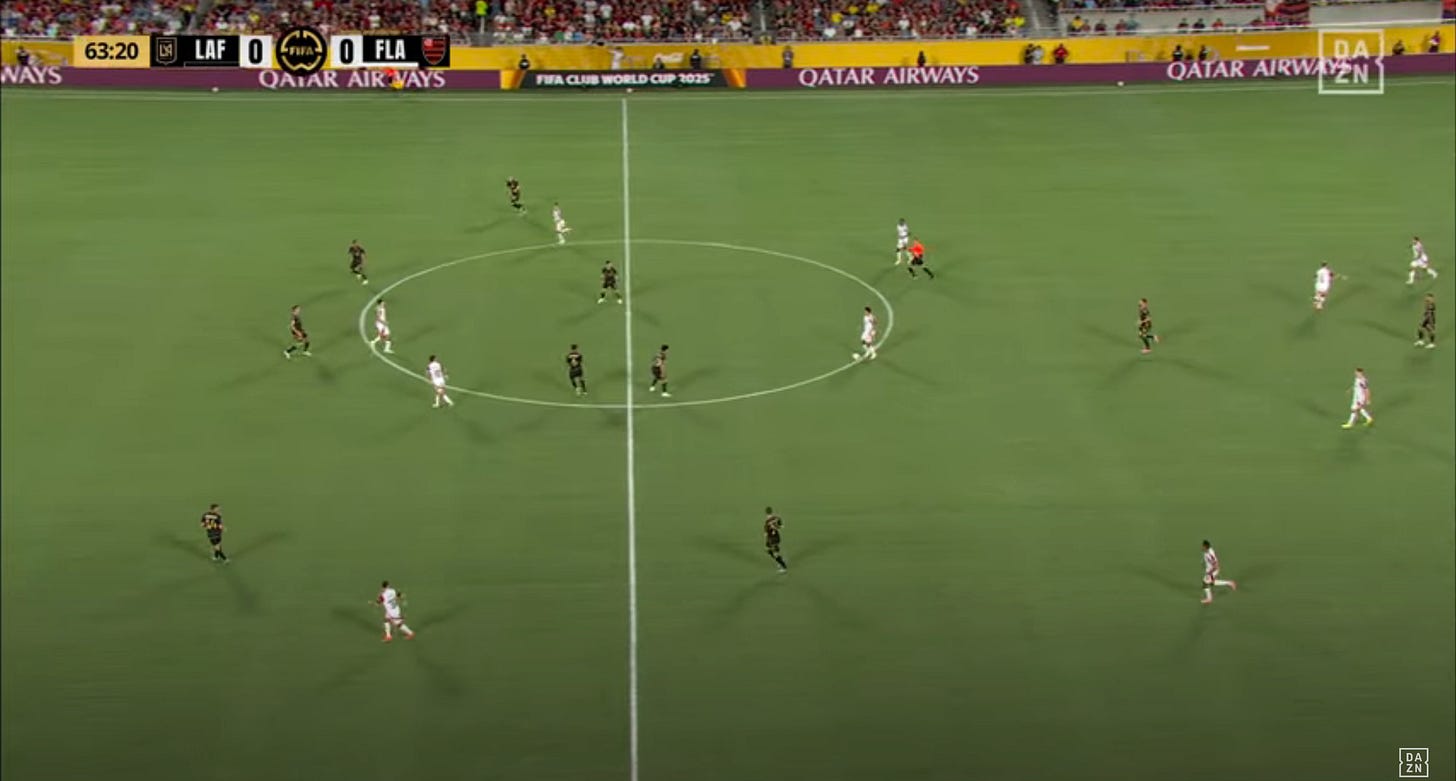


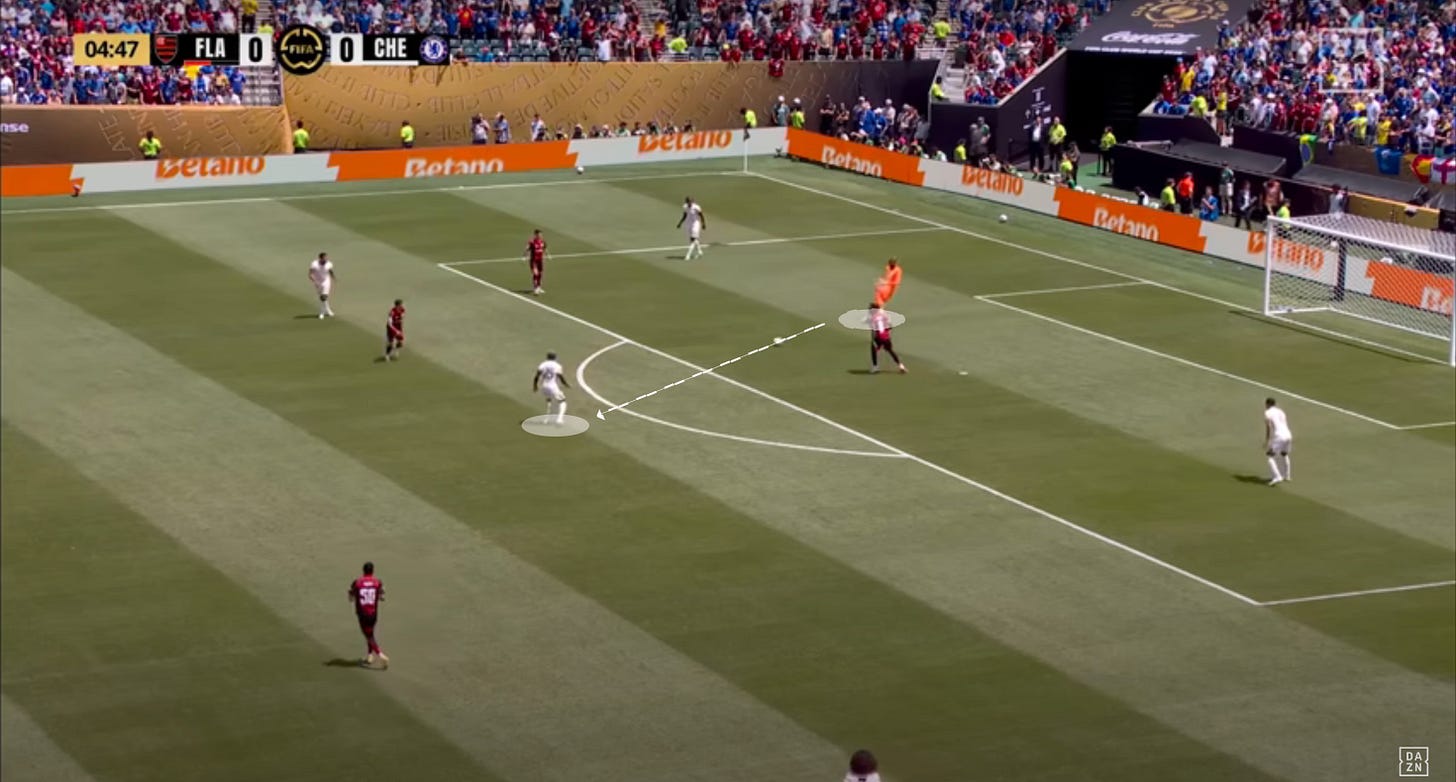
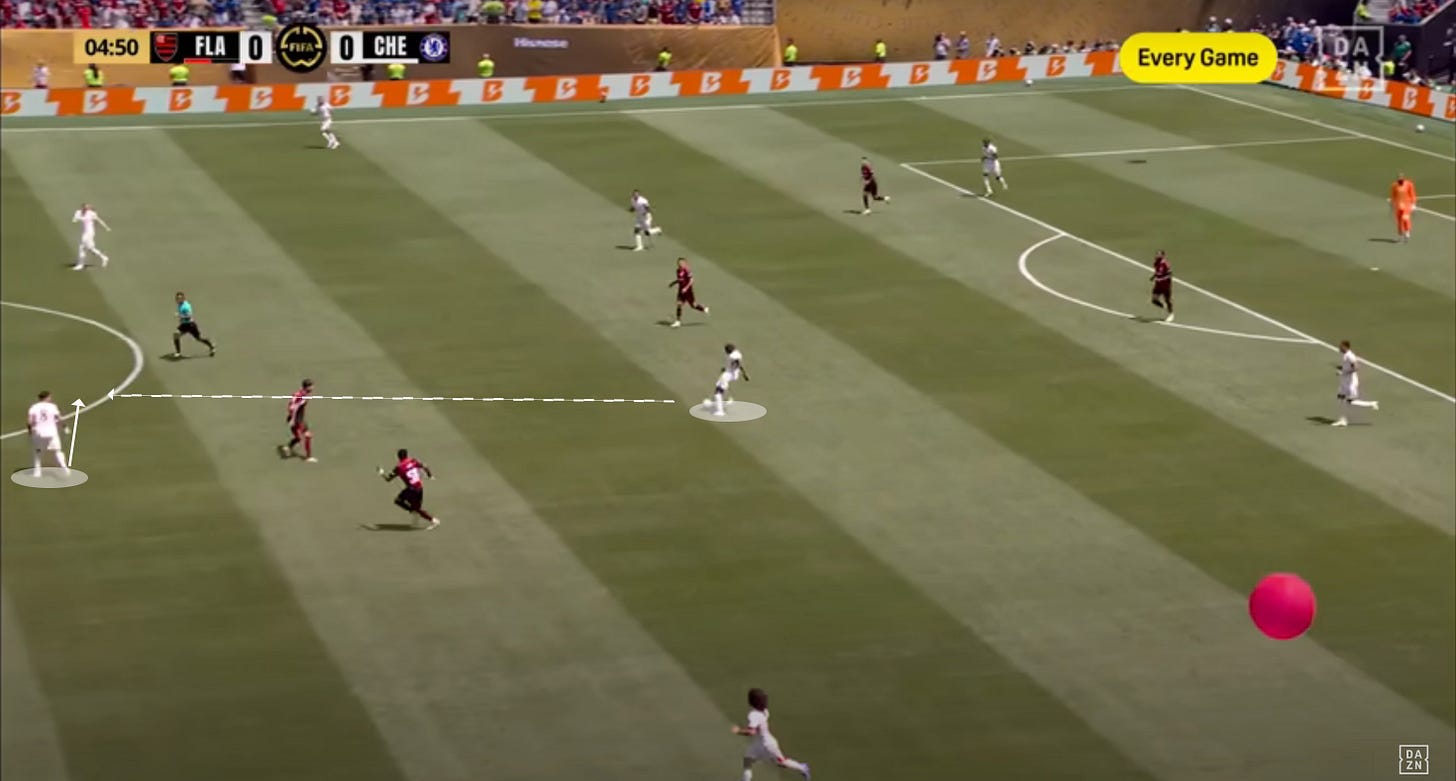
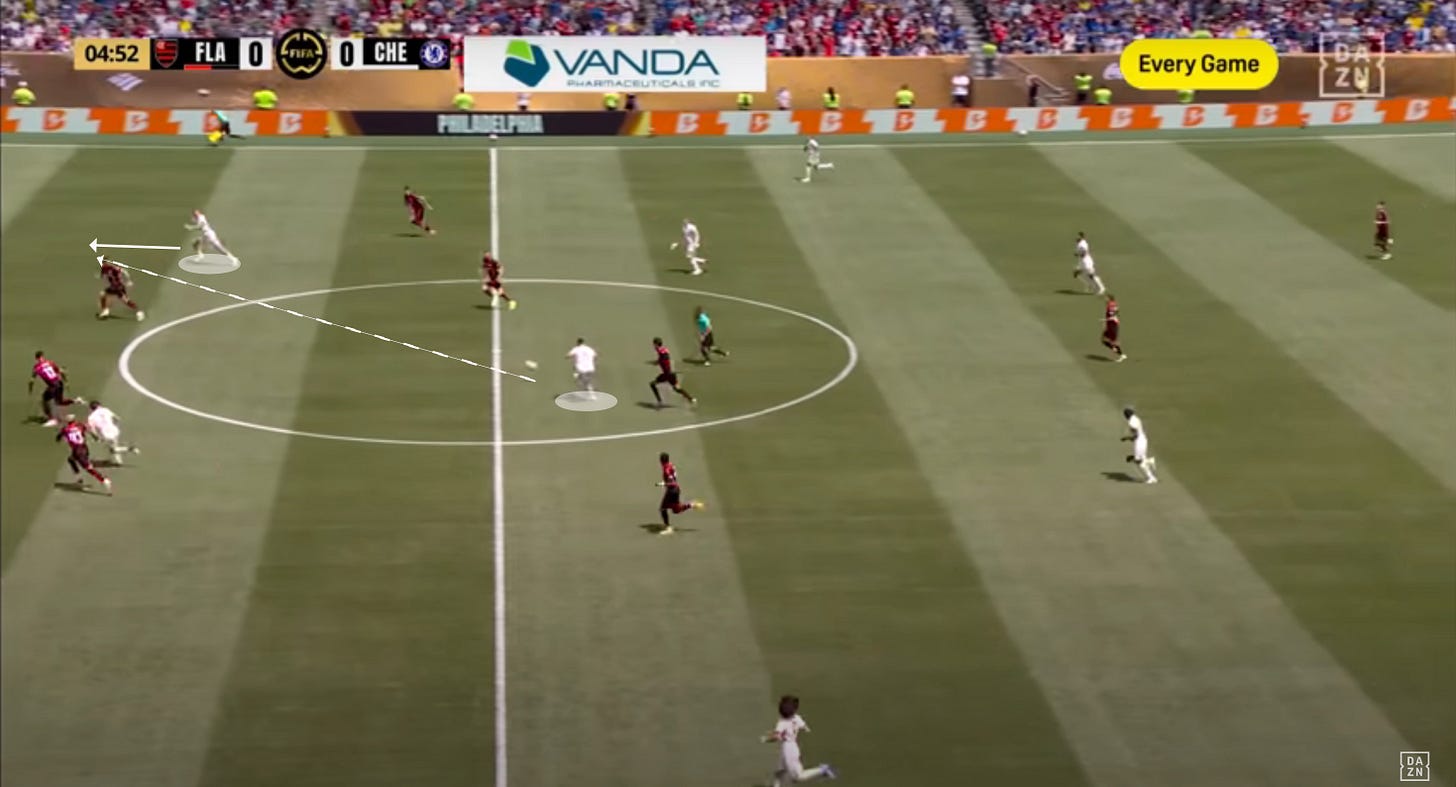
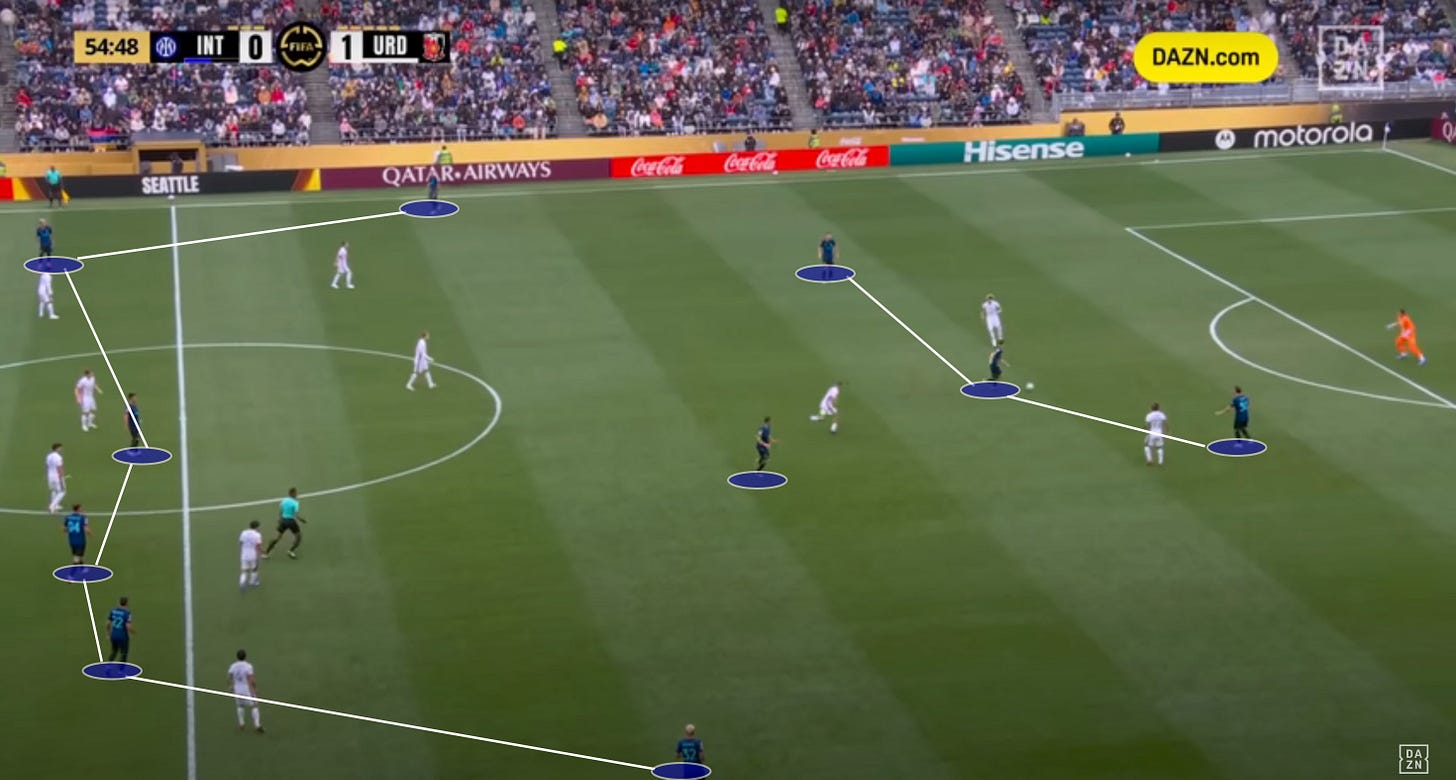


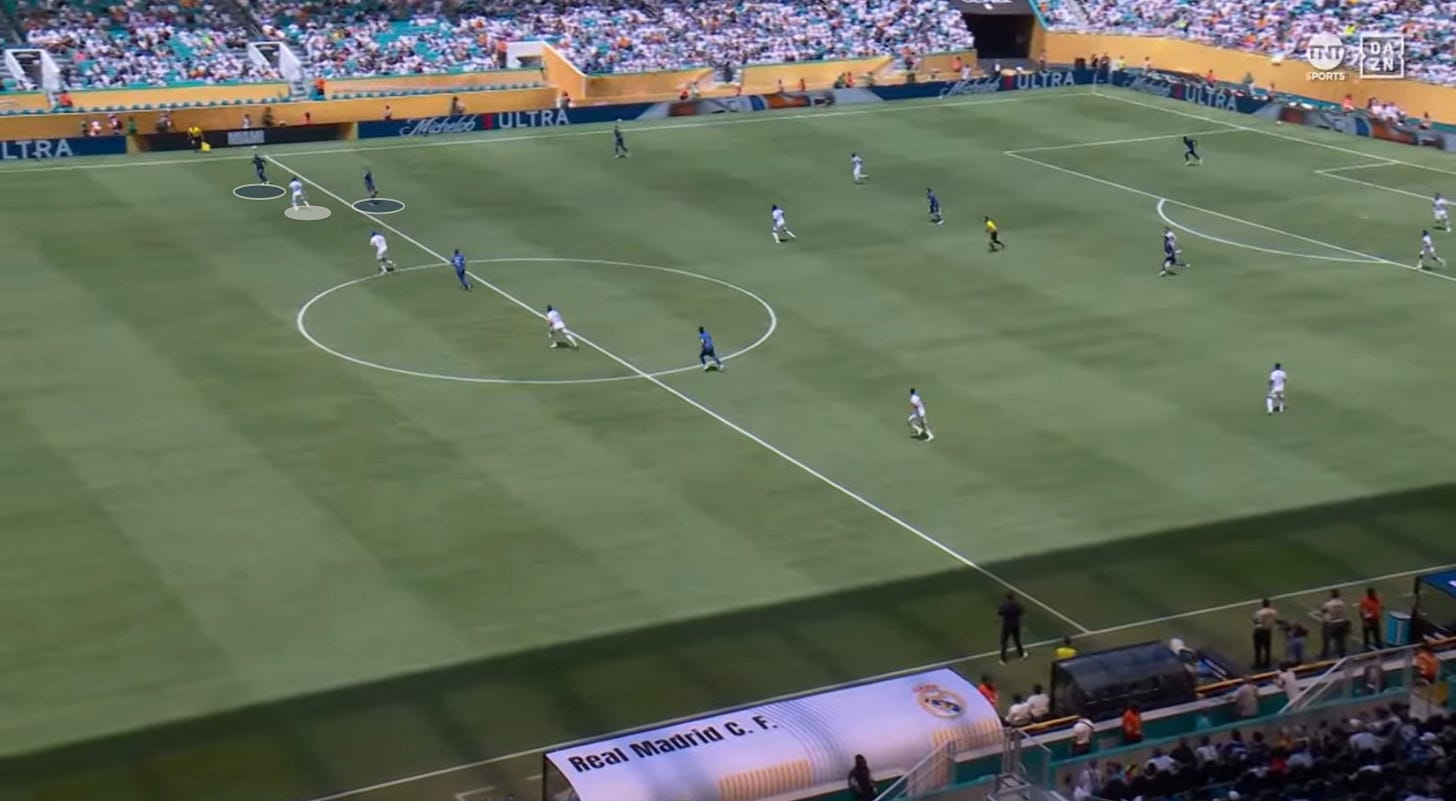






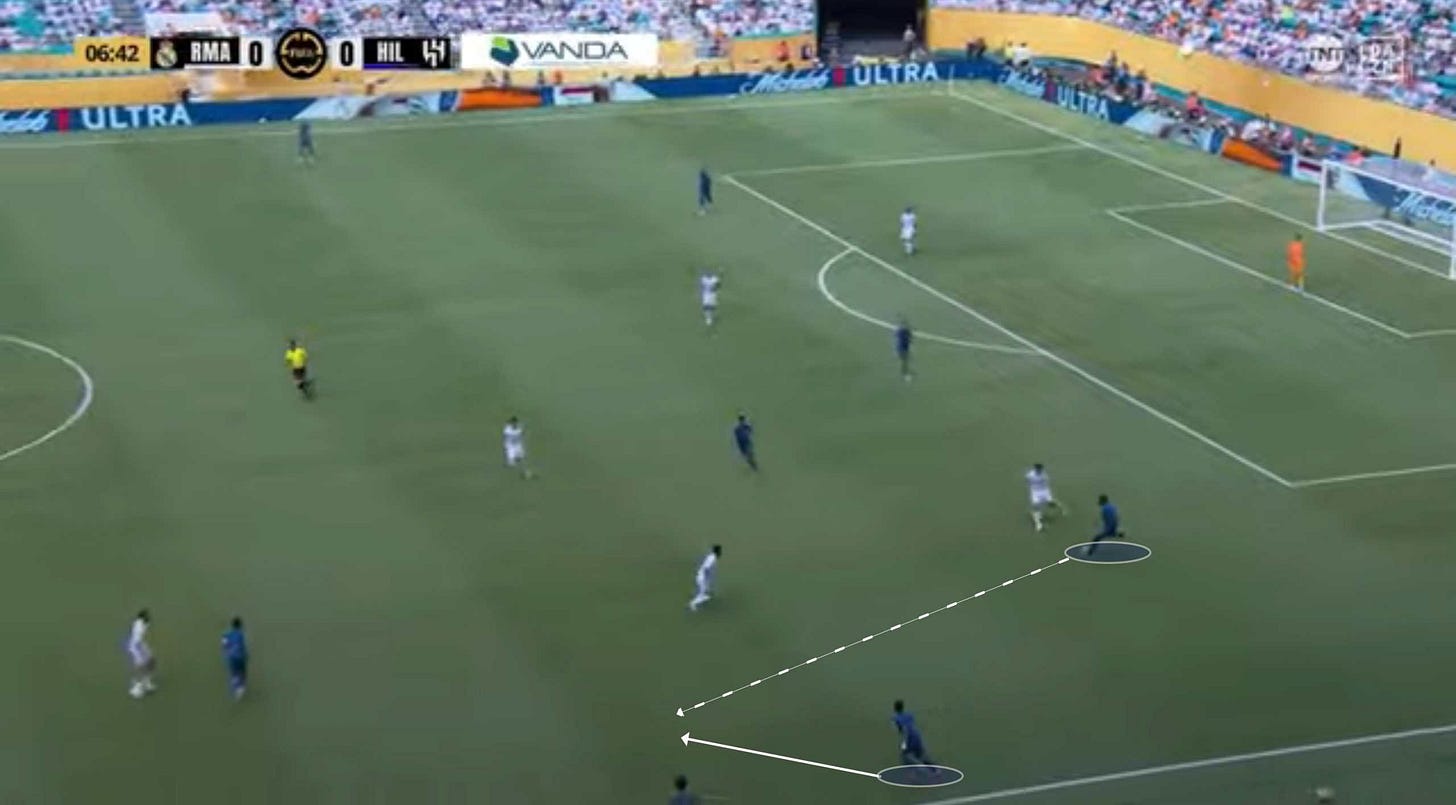

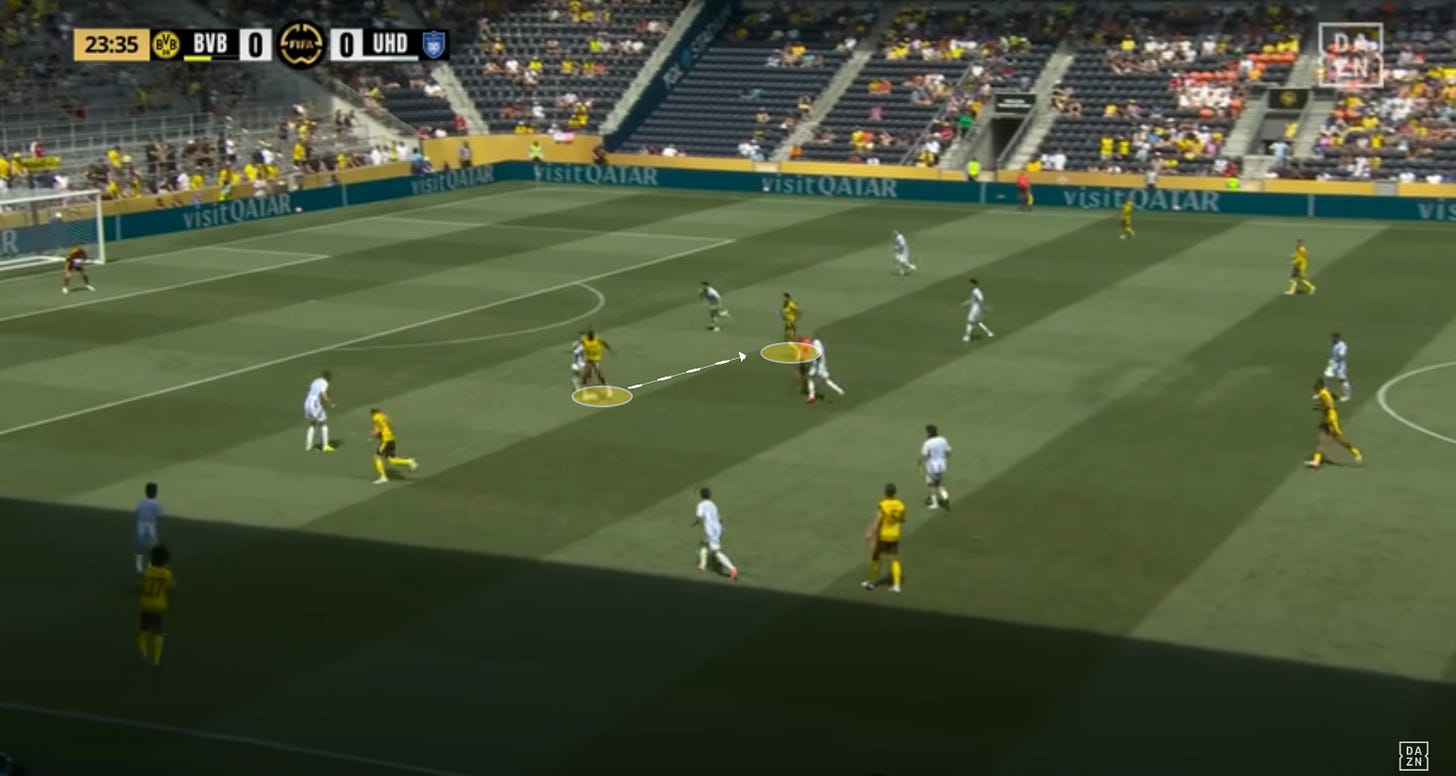
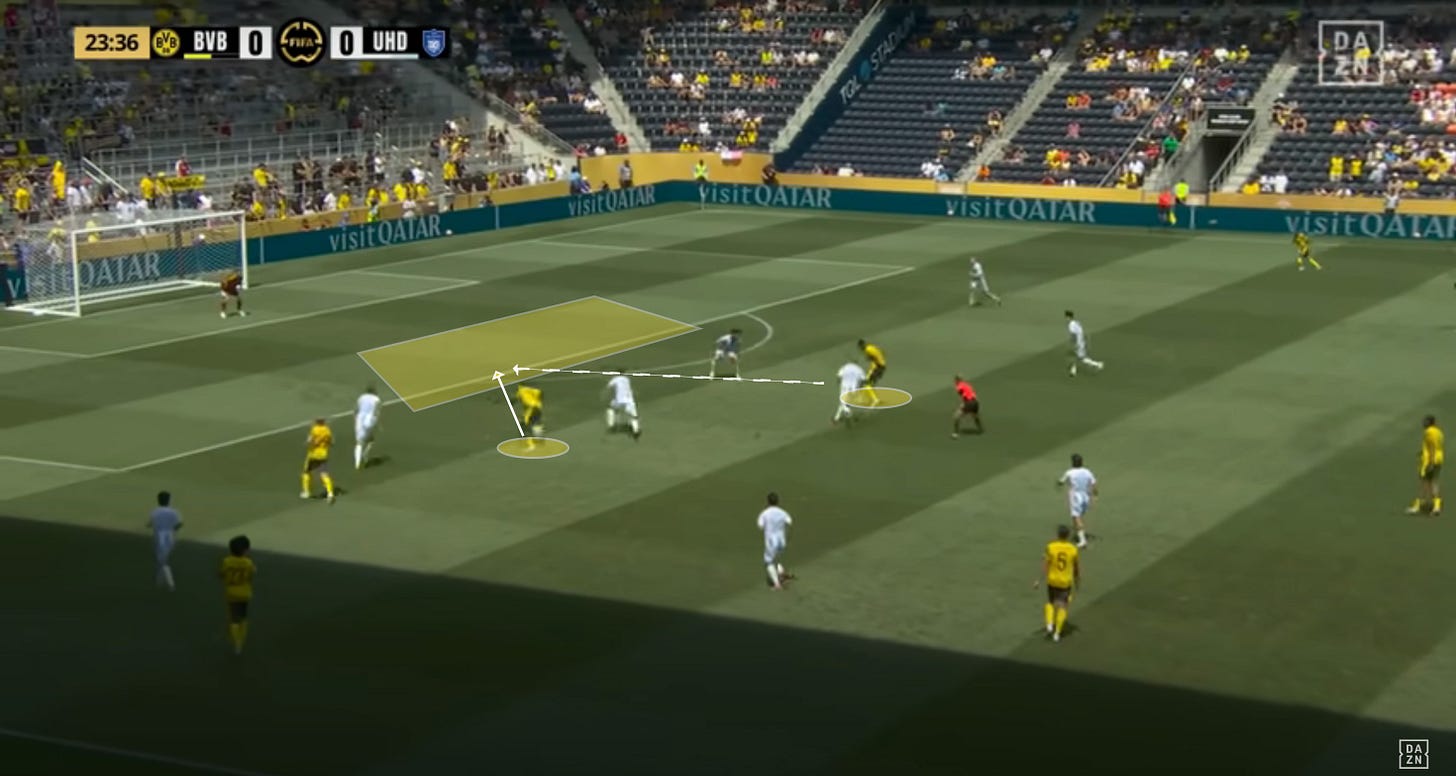




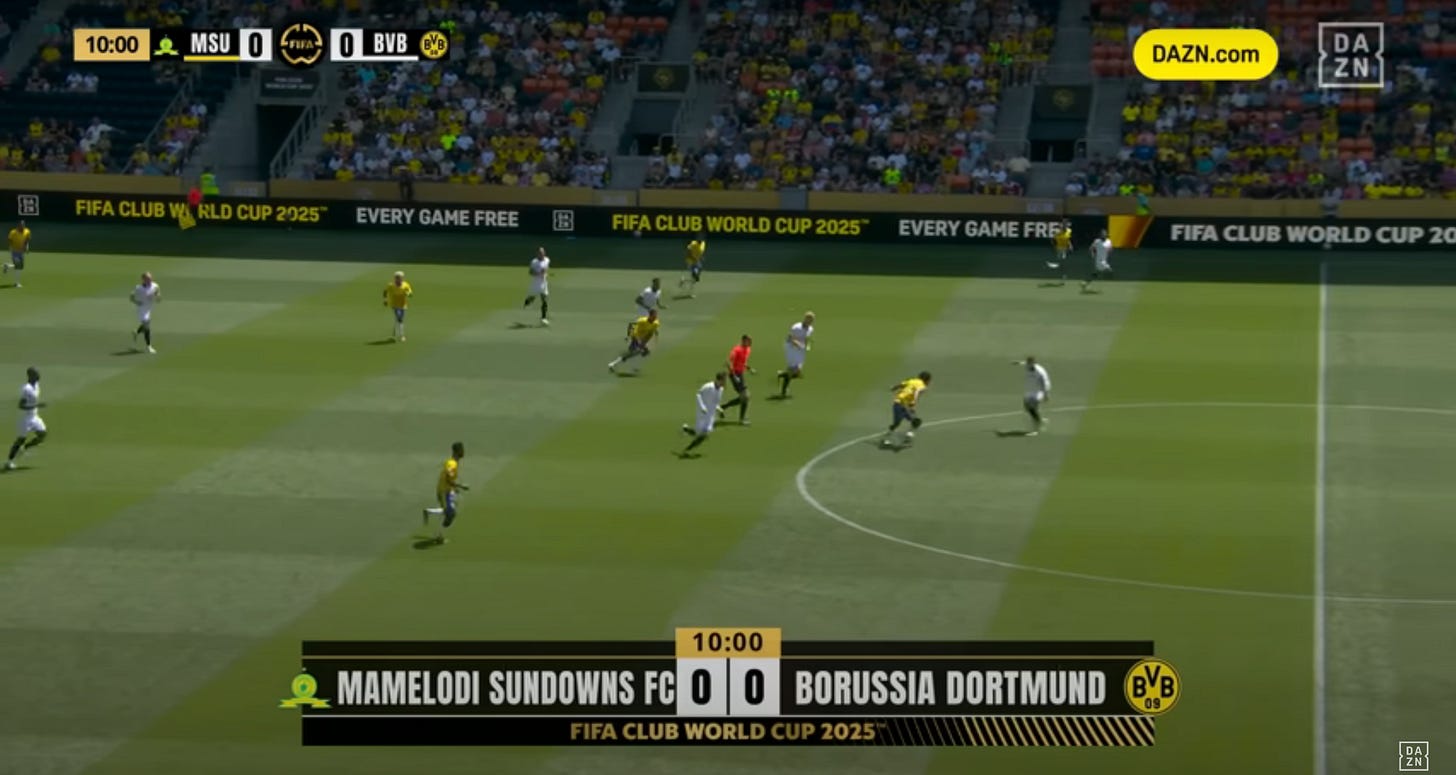

Great breakdown as always. Appreciate the work, BJ!